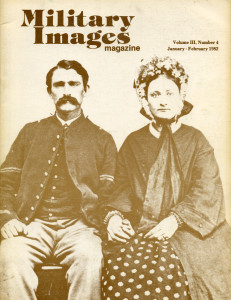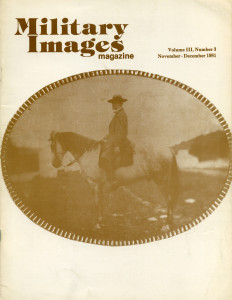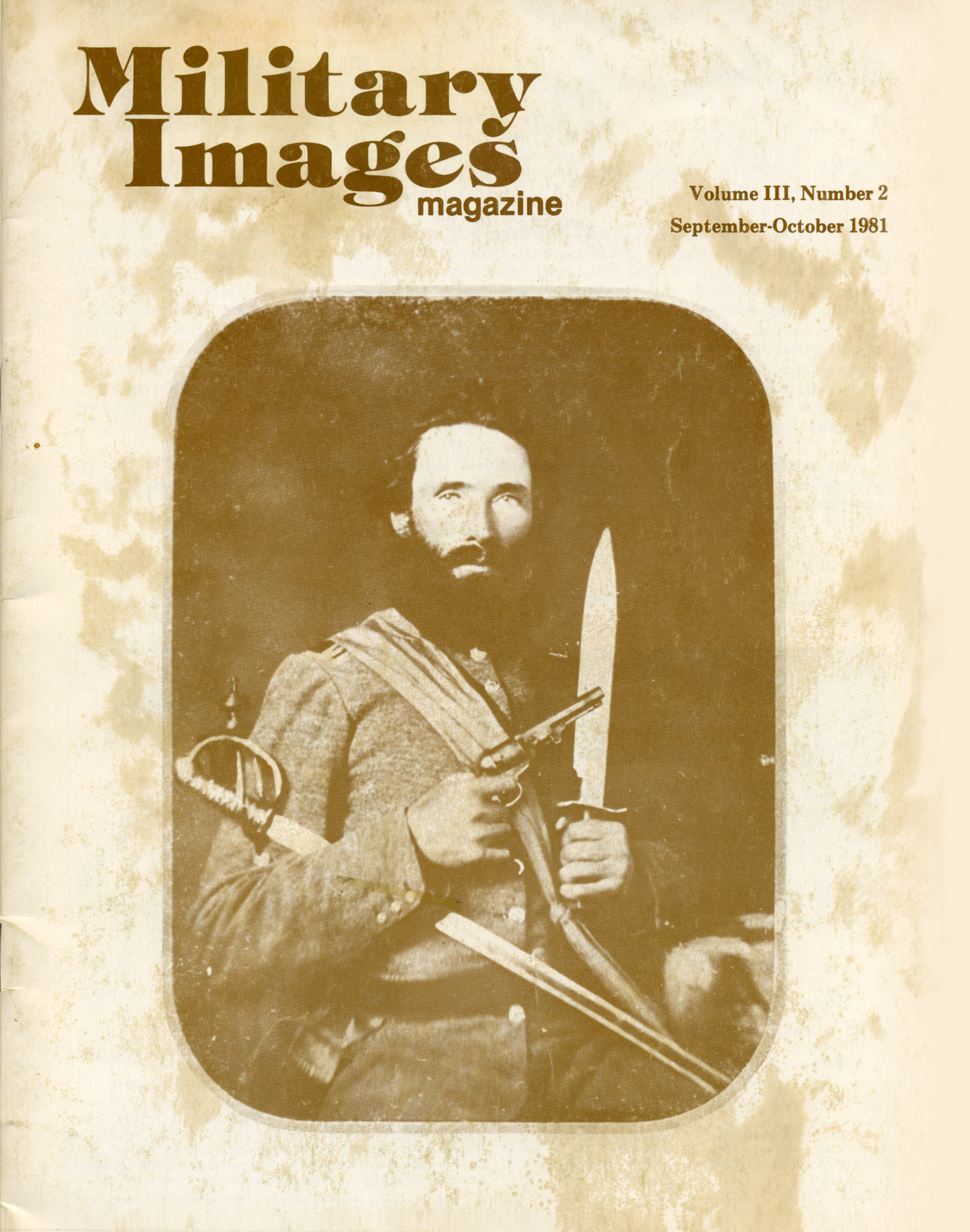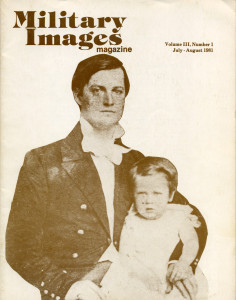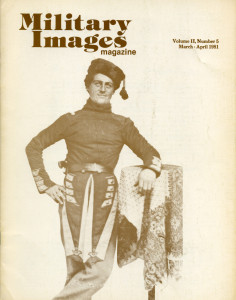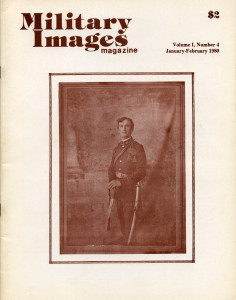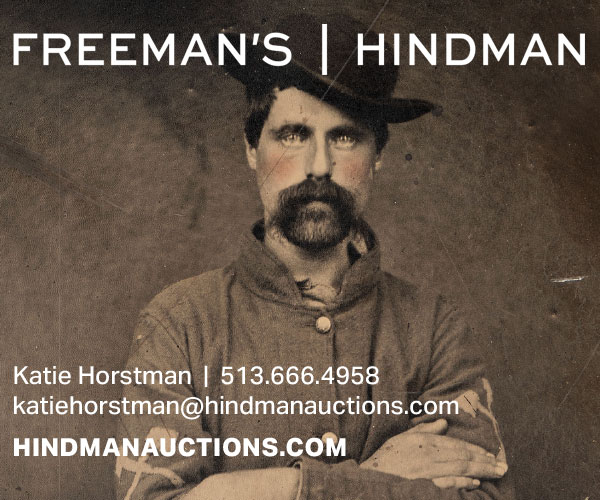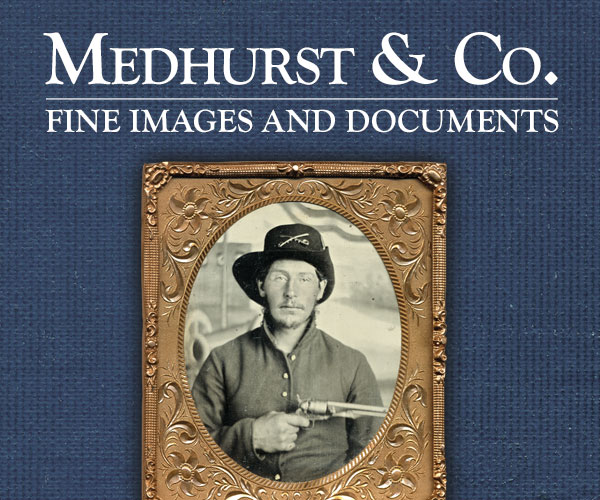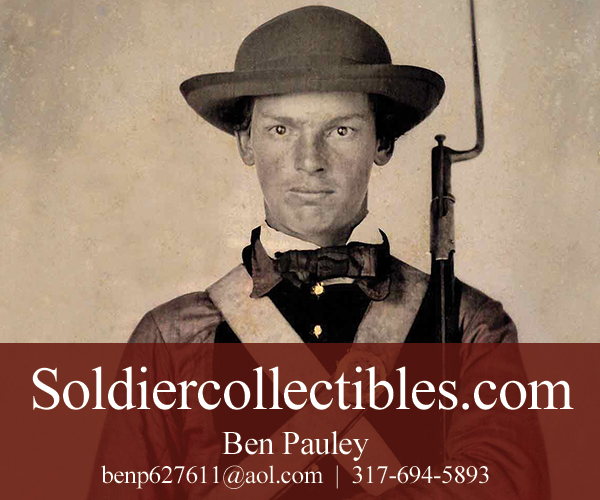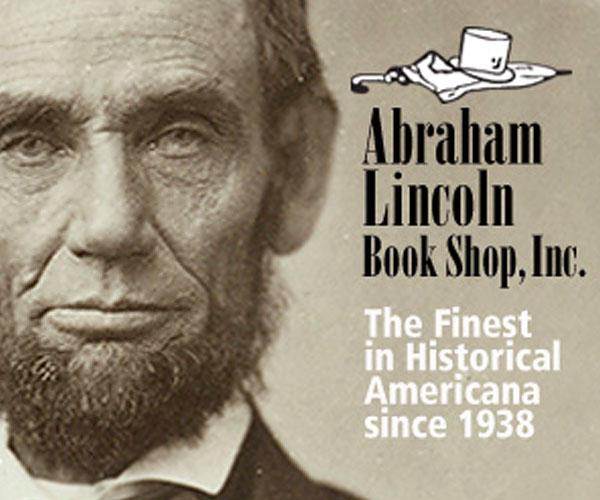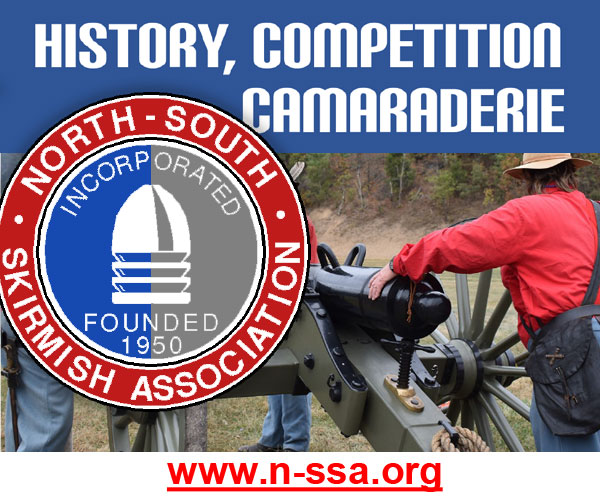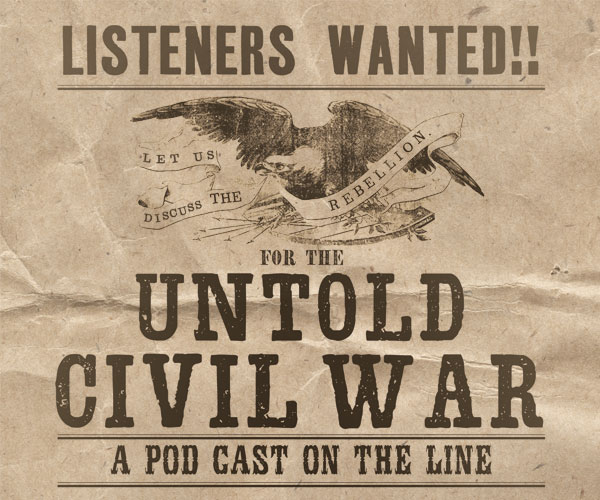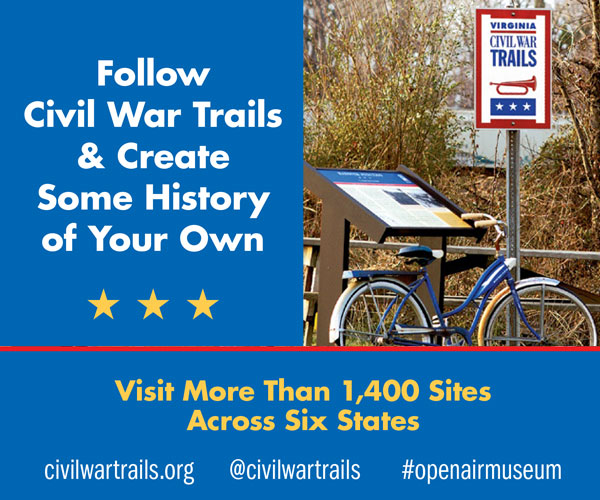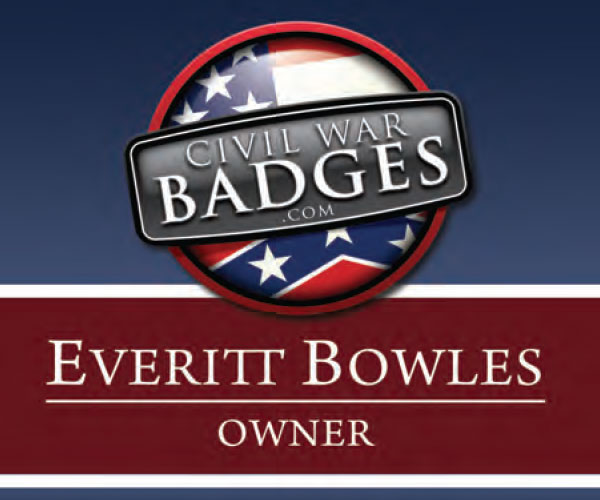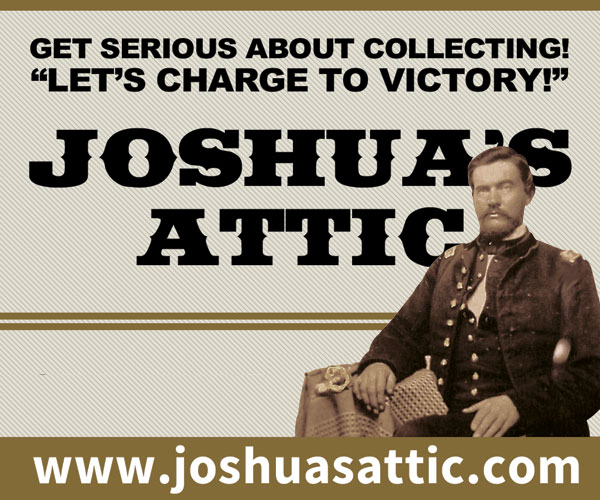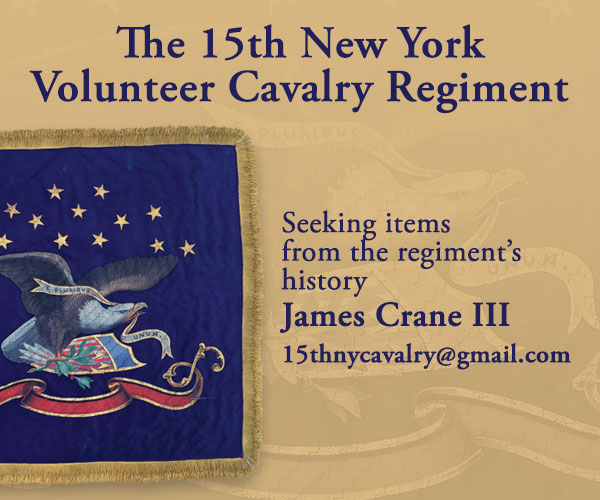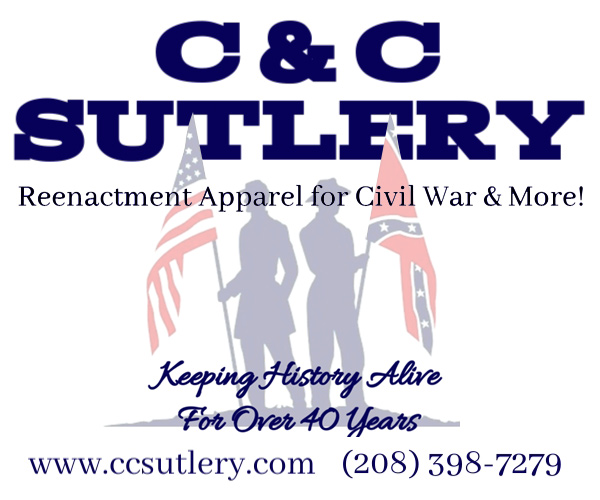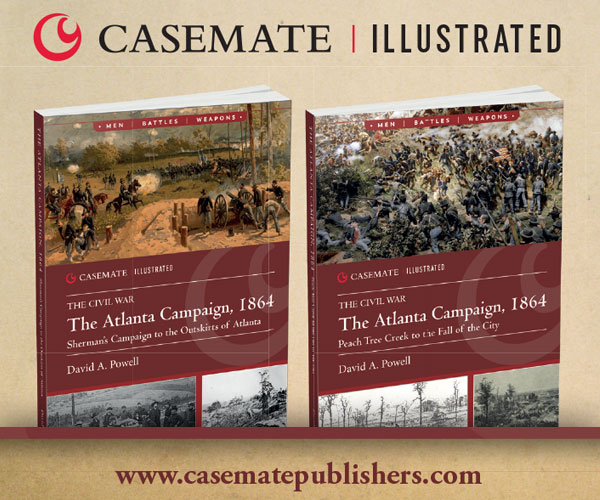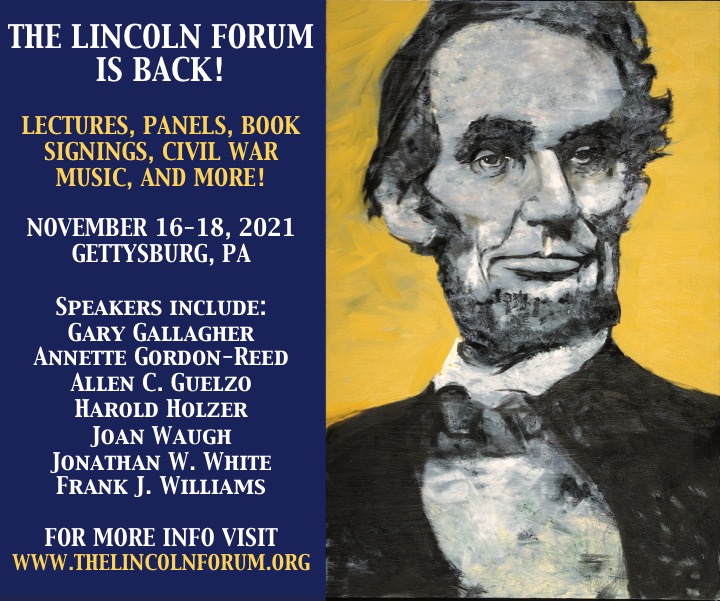The complete issue
Vol. 3, No. 4
(32 pages)
Print edition: Visit our store to check availability
Digital edition: Visit JSTOR.org to purchase
Subscribe to MI
Explore the MI Archives: Browse | Advanced search | Tutorial
Inside
Cover Image
An unidentified New York corporal holding hands with a lady who is probably his wife graces the cover of this issue.
Editor’s Page (inside front cover)
Responding to reader requests for images of the women of the Civil War, the editor explains that the regular “Stragglers” feature is replaced in this issue by a pictorial focusing on the women the soldiers left behind.
Mail Call (p. 2)
The editor responds to letters from readers, who submitted clarifications, corrections, suggestions for articles, and requests for information from the readership.
Passing in Review (p. 3)
The first publication reviewed is Military Uniforms in Canada, 1665-1970 by Jack L. Summers and Rene Chartrand. Consisting of quarto-sized plates to provide images of French, British, and Canadian uniforms, the review feels this would be a very helpful work in identification of uniforms often confused with American militia or Confederate soldiers. The second review is of Gallant Fourteenth: the Story of an Indiana Civil War Regiment by Nancy Niblack Baxter. The author drew from primary source documents such as diaries and letters to compose a regimental history with descriptions of the individuals and battles along with a collection of images. Finally, the book The Hardtack Regiment: an Illustrated History of the 154th Regiment, New York State Infantry Volunteers by Mark H. Dunkelman and Michael J. Winey is reviewed. The volume includes several images of members of the regiment, complete with biographies.
John Hartranft, Defender of the Union by Harry Roach (pp. 4-9)
A little known commander from Pennsylvania, Col. John Frederick Hartranft was often involved in some of the major campaigns of the Civil War. After his 90-day militia regiment left the day before the fighting at First Bull Run (their enlistment had expired), Nartranft remained and fought with valor, eventually receiving the Medal of Honor for his rallying of two Massachusetts regiments at the end of the action. He returned to Pennsylvania and raised the 51st Pennsylvania Infantry, which was often linked with the careers of Edward Ferrero and Ambrose Burnside. Despite being a teetotaler, Hartranft led his hard-drinking 51st at New Bern, during the last push at “Burnside’s Bridge” at Antietam, at Fredericksburg, Chattanooga, and several other campaigns, often without due recognition. He was hailed as the “Hero of Fort Stedman” at the end of the war, culminating his career as Brevet Major General.
Images of the 51st Pennsylvania Infantry (pp. 10-13)
A collection of 19 images of members of 51st Pennsylvania Infantry follows the biographical article of their colonel, John Hartranft.
The Havelock by Don Dillon (pp. 14-15)
The article and accompanying images features the seldom used uniform hat cover, which draped over the back of the neck in order to protect from sunburn and heatstroke. Popularized during the Sepoy Rebellion of 1857 and a staple of the French Foreign Legion, the havelock was only popular at the beginning of the Civil War as it did not provide the air circulation that soldiers preferred. One of the four images includes an alternative to the havelock in the form of a kepi with a brim as worn by the 5th New Hampshire Infantry.
Sunshine Soldiers: New Jersey’s Nine Months Regiments at the Battle of Fredericksburg by Joseph G. Bilby (pp. 16-23, 13)
The author uses many personal stories to describe how New Jersey developed a nine-month system of militia service in parallel with a regimental system requiring three year commitments. The article describes the chaos of training camp and the politics behind the election of officers, using the election of George Mindil as the “Boy Colonel” of the 17th New Jersey due to his recent service with General Phil Kearney, who had recently been killed at the Battle of Chantilly. Mindil got his regiment into disciplined order while training them in the shadow of the U.S. Capitol building, while other nine-month regiments were not as disciplined. As the nine-month regiments moved towards and then into Fredericksburg, the men had different experiences – from participating in looting to experiencing the horrors of the fighting–which augment the overall story of the Battle of Fredericksburg.
The Girl I Left Behind Me by Carol Villa (pp. 24-31)
Thirty-three different images, most of them cartes de visite, ambrotypes or tintypes, illustrate this pictorial of the men who fought in the Civil War with the women for whom they fought. The images provide a wider sense of the more common forms of dress of the era than do the periodicals of the time, which were often the more elaborate “fashion plates” that guided more understated lifestyles. A few of the images are taken outdoors: one was at Lookout Mountain and another is of a woman riding sidesaddle on a horse led by a soldier. However, most are studio images that include wives, sisters, children, and mothers.
Back Image
A touching image of Lt. Col. Judson Kilpatrick of the 2nd New York Cavalry and his wife, who is wearing a fur-trimmed winter mantle with muff.
